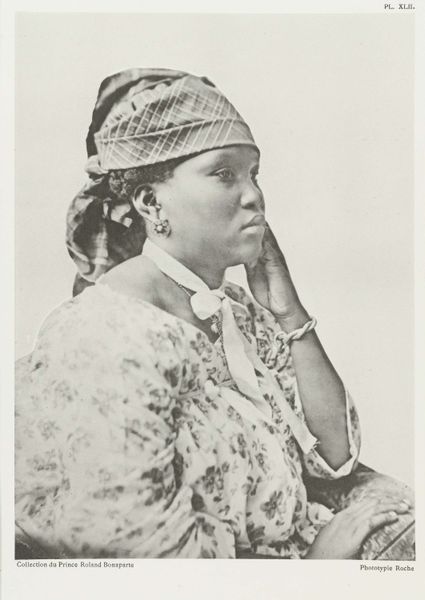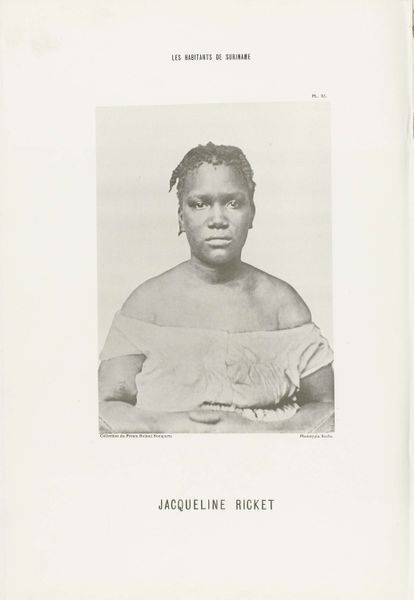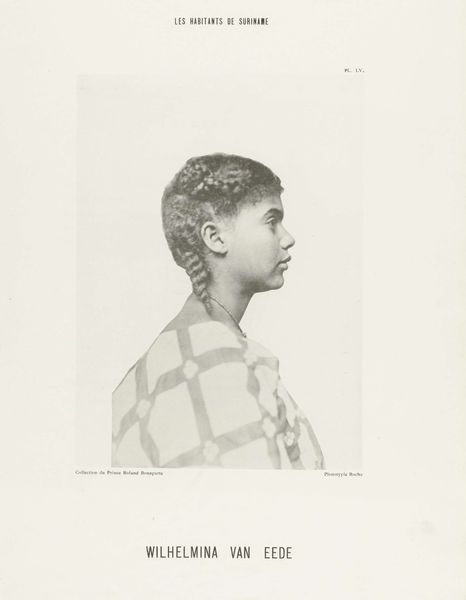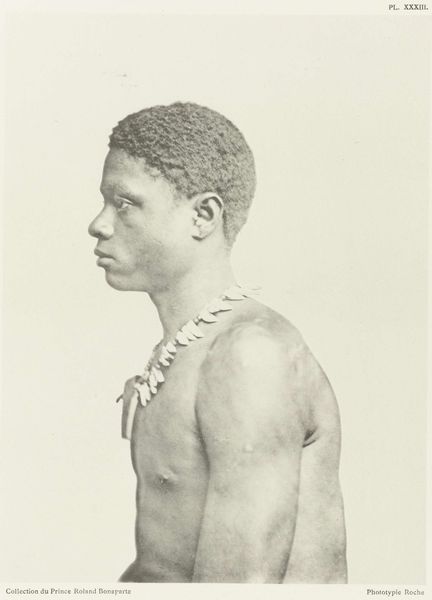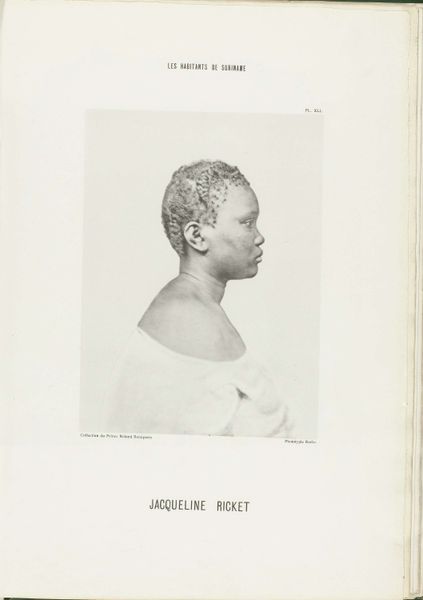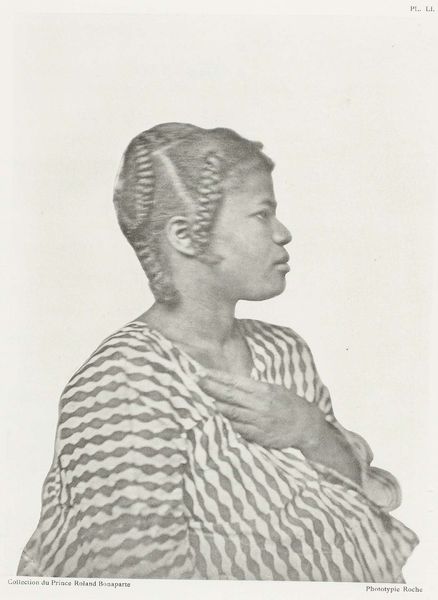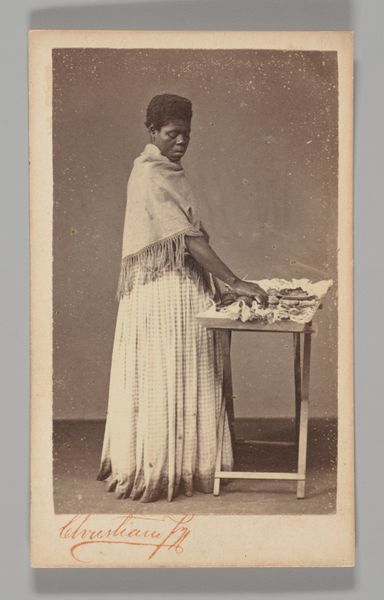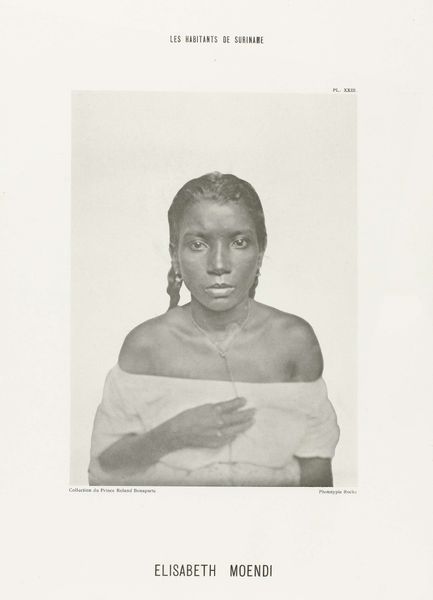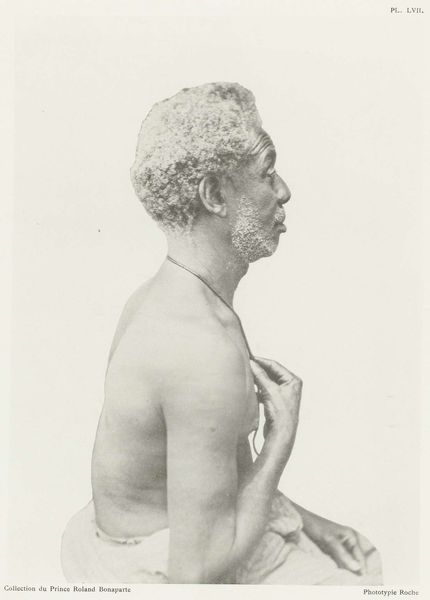
photography, collotype
#
portrait
#
african-art
#
photography
#
collotype
#
realism
Dimensions: height 236 mm, width 176 mm
Copyright: Rijks Museum: Open Domain
Editor: This portrait of Gerardina from 1883 to 1884, held here at the Rijksmuseum, is rendered as a collotype, providing such detailed tonal variations. It presents the sitter in stark, almost clinical clarity. Curator: Yes, there is something arresting in its directness. The almost brutal evenness of the light flattens the face, focusing attention instead on the exquisite texture of the hair and the intricate beadwork. There is an undeniable formalism here, a study in shape and contour. Editor: The collotype printing process is intriguing, creating subtle shifts and gradations. But I keep wondering about the laborious efforts, especially in an era where these photographic methods demanded significant time and expertise. Also, this image's colonial undertones are undeniable. What were the societal structures enabling the subject's capture and depiction? Curator: True, we cannot disregard the power dynamics implicit in this period of ethnographic photography, where human beings are treated as objects. The work is situated within Roland Bonaparte’s project about ‘Les Habitants de Suriname.’ It is crucial to acknowledge this historical framing when interpreting the image’s aesthetic qualities. Look, for example, at the delicate fall of the drape—its subtle disruption is central to how the form reads against the stark negative space of the background. Editor: While appreciating the formalism, can we set aside the material and sociopolitical context? Even the term collotype suggests a collective production of multiple, identical items. Each print becomes evidence of labour. Consider, what of the labour, what of Gerardina herself? What was compensated here? Curator: Indeed, this photograph, like many others from that time, generates essential conversations concerning history and representation. Understanding the tension amongst objective scientific practice and potentially subjective art remains a vital ongoing question. Editor: Agreed. Viewing is now further informed. And though the image retains visual strength, it reminds me of colonial practices where the value of material work of labor needs reappraisal.
Comments
No comments
Be the first to comment and join the conversation on the ultimate creative platform.


